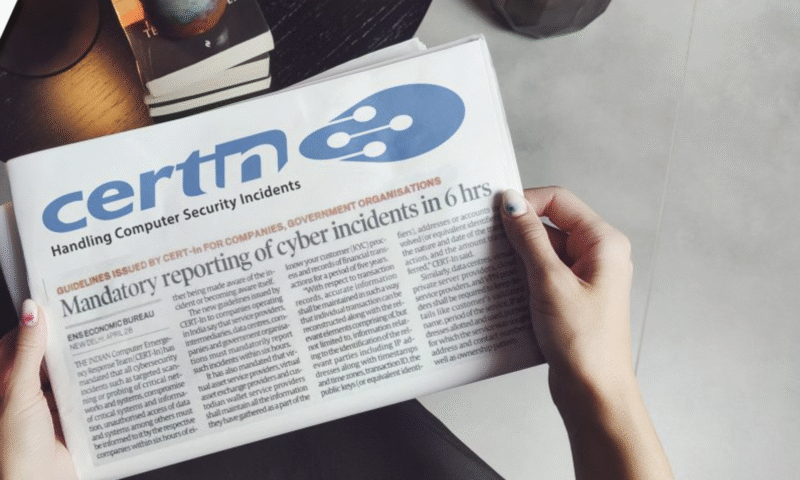
[CIVN-2025-0242] Cross-Site Scripting Vulnerability in Zimbra Collaboration Suite
—–BEGIN PGP SIGNED MESSAGE—–
Hash: SHA256
Cross-Site Scripting Vulnerability in Zimbra Collaboration Suite
Indian – Computer Emergency Response Team (https://www.cert-in.org.in)
Severity Rating: HIGH
Software Affected
Zimbra Collaboration Kepler version prior to 9.0.0 P44
Zimbra Collaboration Daffodil version prior to 10.0.13
Zimbra Collaboration Daffodil version prior to 10.1.5
Overview
A vulnerability has been reported in Zimbra Collaboration Suite which could allow a remote attacker to perform cross-site scripting (XSS) attack on the targeted system.
Target Audience:
Organizations and individuals using the affected Zimbra Collaboration versions.
Risk Assessment:
High risk of sensitive data disclosure and account compromise.
Impact Assessment:
Potential for complete account take-over and data exfiltration.
Description
Zimbra Collaboration Suite (ZCS) is an open-source communication and collaboration platform offering functionalities such as email, calendar, contact, and document management in both on-premises and cloud deployments.
This vulnerability exists in the Zimbra Classic Web Client due to insufficient sanitization of HTML content in ICS (iCalendar) files. An attacker can inject malicious JavaScript that executes within a victims session, potentially enabling actions such as modifying mail filters to redirect messages to an attacker-controlled email account.
Successful exploitation of this vulnerability could allow an attacker to perform unauthorized activities on the victims account, including e-mail redirection and data exfiltration.
Note: This vulnerability (CVE‑2025‑27915) is being exploited in the wild. Users are advised to apply patches urgently.
Solution
Apply appropriate software updates as mentioned by the vendor:
https://wiki.zimbra.com/wiki/Zimbra_Releases/9.0.0/P44#Security_Fixes
https://wiki.zimbra.com/wiki/Zimbra_Releases/10.0.13#Security_Fixes
https://wiki.zimbra.com/wiki/Zimbra_Releases/10.1.5#Security_Fixes
Vendor Information
Zimbra
https://wiki.zimbra.com/wiki/Zimbra_Releases/9.0.0/P44#Security_Fixes
https://wiki.zimbra.com/wiki/Zimbra_Releases/10.0.13#Security_Fixes
https://wiki.zimbra.com/wiki/Zimbra_Releases/10.1.5#Security_Fixes
References
Zimbra
https://wiki.zimbra.com/wiki/Zimbra_Releases/9.0.0/P44#Security_Fixes
https://wiki.zimbra.com/wiki/Zimbra_Releases/10.0.13#Security_Fixes
https://wiki.zimbra.com/wiki/Zimbra_Releases/10.1.5#Security_Fixes
CVE Name
CVE-2025-27915
– —
Thanks and Regards,
CERT-In
Incident Response Help Desk
e-mail: incident@cert-in.org.in
Phone: +91-11-22902657
Toll Free Number: 1800-11-4949
Toll Free Fax : 1800-11-6969
Web: http://www.cert-in.org.in
PGP Fingerprint: A768 083E 4475 5725 B81A A379 2156 C0C0 B620 D0B4
PGP Key information:
https://www.cert-in.org.in/s2cMainServlet?pageid=CONTACTUS
Postal address:
Indian Computer Emergency Response Team (CERT-In)
Ministry of Electronics and Information Technology
Government of India
Electronics Niketan
6, C.G.O. Complex
New Delhi-110 003
—–BEGIN PGP SIGNATURE—–
iQIzBAEBCAAdFiEE6r4Iam/Ey0c/KakL3jCgcSdcys8FAmjlFUoACgkQ3jCgcSdc
ys+xnA/+ICClp0v7TfQrGZfIp7VTe3BR9tdjHYTd49COe6BYpTKPUaiqAxL42b1T
NUXvBUdatO4IZGgWp9GmMp9G7f7pdGJ2Dk/wx/6g2PBFNI11LlkWW4EGnhX8s5xh
xou7Zf2SInSHrmw+3etwC3QEOpZbf2qlL2plK8NqOpPoS9+z9IgV+10pS5P1vwcF
5PFjXW9zmcgAhXXgS0EP4gapWktXPAEHdfi6gQIxA1jhhQlDIjXN6entEMuS3w0s
l7kraM9e6EiEp3rJVNW+Zta93WF2zEjSMnnipwJUxGtS7LtAUZ4P3w6OSzyJzHYL
kYc1CftLeJMqSVDfrwMXE2iK/PDF3UcQWHY9pEYG0N2qsC76yVU0PKMJOq4Tpq8t
IYoEq6fVsAzGOwDihqS22p+7jKTugoSE9BBxwU7Lisx8fsYdWL7cVNeipHT45//e
jDg4TsU9khmMO1ddbDr/pv/to0fQHVvjK3cTeyJ3o5xgShkylXjQn2qfyoF93fO4
AmZCoo5dJ5SB3w4dX7XiO2N+6elrRqfqdZgDYjjP9Z5NFkH3lBLrLQOuJGYypGTD
9HSi/qlDd8Lyj51B5e4LKTLXfPG4ZwiI/haHJBUuSrqUdgh+K7WesIyVFPvT3BF1
kc+VNniBeLRUSojxksNM64neNCnRQJiOq0OkFzSWy+7W+h34aKQ=
=+xlm
—–END PGP SIGNATURE—–

![[CIAD-2025-0055] WhatsApp Account takeover campaign (GhostPairing)](https://teamwin.in/wp-content/uploads/2025/06/certin-new-e1751351599950-500x383.png)

